Discover the Top Birdwatching Destinations in Sri Lanka for Avid Bird Lovers
Unveiling Sri Lanka's Rich Avian Diversity and Birdwatching Opportunities
Sri Lanka is a paradise for birdwatching enthusiasts, boasting a rich avian diversity that captivates visitors from around the globe. The island’s varied landscapes, from lush rainforests to coastal wetlands, provide a haven for over 400 bird species, making it an ideal destination for birdwatching tours. Here you will find most visited birdwatching hotspots in Sri Lanka
For those seeking the best places to indulge in birdwatching in Sri Lanka, the options are plentiful. From the misty hills of Horton Plains National Park to the tranquil waters of Bundala National Park, each location offers a unique opportunity to spot a wide array of bird species in their natural habitats.
Sri Lanka is home to many endemic birds such as the Sri Lankan Junglefowl and Layard’s Parakeet, as well as migratory species that visit during specific seasons. Whether you are an avid birder or just starting out, the island’s diverse bird population promises an unforgettable experience for all enthusiasts.
Exploring the Enchanting Wilderness: Top 20 Birdwatching Hotspots in Sri Lanka
Below, we have compiled a comprehensive list of our top 20 recommended birdwatching hotspots in Sri Lanka. These locations offer exceptional opportunities for bird enthusiasts to observe a wide variety of avian species in their natural habitats, providing a truly enriching and memorable experience for all visitors interested in ornithology.
1. Sinharaja Rainforest
Sinharaja Forest Reserve tops our list of birdwatching hotspots in Sri Lanka, a UNESCO World Heritage Site, renowned for its high density of endemic bird species such as the Sri Lanka Blue Magpie and Green-billed Coucal. With over 154 bird species recorded, the Rainforest also features the unique ‘mixed-species feeding flocks’ known as ‘bird waves’, where different species feed and move together within various canopies of the rainforest. These flocks can include 30-50 birds of various species emitting varied sounds as they feed and move swiftly. The Orange-billed babbler and Crested drongo are the leading species of these flocks.
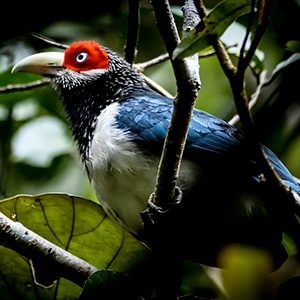
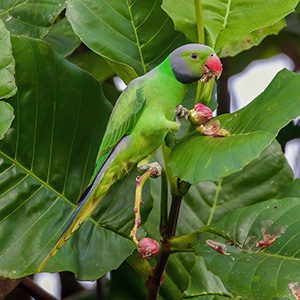

Birds to look for:
- Green-billed Coucal (Centropus chlororhynchos)
- Red-faced Malkoha (Phaenicophaeus pyrrhocephalus)
- Ceylon Blue Magpie (Urocissa ornata)
- Rufous Babbler (Turdoides subrufa)
- Ceylon Hill Myna (Gracula ptilogenys)
- Ashy Headed Laughing Thrush (Argya cinereifrons)
- White Headed Starling (Sturnia erythropygia)
- Ceylon Frogmouth (Batrachostomus moniliger)
- Legge’s Flowerpecker (Dicaeum vincens)
- Scimitar Babbler (Pomatorhinus horsfieldii)
- Ceylon Trogon (Harpactes wardi)
- Black Eagle (Ictinaetus malaiensis)
- Crested Serpent & Hawk Eagles (Spilornis cheela)
- Chestnut Backed owlet (Glaucidium castanonotum)
- Yellow-fronted Barbet (Psilopogon flavifrons)
- Spot-winged Thrush (Geokichla spiloptera)
- Scaly Thrush (Zoothera dauma)
- Ceylon Jungle Fowl (Gallus lafayettii)
- Ceylon Spurfowl (Galloperdix bicalcarata)
- Crimson Backed woodpecker (Chrysocolaptes stricklandi)
- Ceylon Crested Drongo (Dicrurus paradiseus)
- Layard’s Parakeet (Psittacula calthropae)
- Ceylon Green Pigeon (Treron pompadora),
- Ceylon Lorikeet (Loriculus beryllinus),
- Serendib Scops Owl (Otus thilohoffmanni)
- Ceylon Bay Owl (Phodilus assimilis)
- Ceylon Grey Hornbill (Ocyceros gingalensis)
2. Udawalawe National Park
Famous for its large population of water birds like storks, ibises, and herons, Udawalawe is a must-visit for bird enthusiasts. The Udawalawe National Park has recorded 184 bird species, including 33 migratory ones, hence a top birdwatching hotspot in Sri Lanka . The park is a haven for birders, hosting endemics such as the Red-faced malkoha, Ceylon grey hornbill, Brown-capped babbler, and Sri Lanka spur fowl, alongside rare migrants like the white wagtail and black-capped kingfisher. Flocks of water birds, including Cormorants, Eurasian spoonbills, Black-headed ibises, Asian open bills, and Painted storks, reside in and around the reservoir. The park’s open areas attract birds of prey like the white-bellied sea eagle, crested serpent eagle, grey-headed fish eagle, booted eagle, and the changeable hawk-eagle.
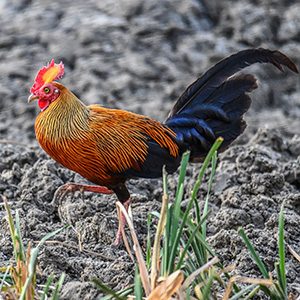

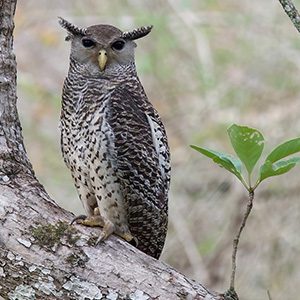
Birds to look for:
- Large Prinia (Prinia flavicans)
- White-browed Prinia (Prinia inornata)
- Ashy Prinia (Prinia socialis)
- Franklin’s Prinia (Prinia hodgsonii)
- Yellow-eyed Babbler (Chrysomma sinense)
- White-throated Babbler (Argya gularis)
- White-rumped Shama (Copsychus malabaricus)
- Brown-capped Babbler (Pellorneum fuscocapillus)
- Black-fronted Babbler (Rhopocichla atriceps)
- Common Iora (Aegithina tiphia)
- Marshall’s Iora (Aegithina nigrolutea)
- Ceylon Grey Hornbill (Ocyceros gingalensis)
- Blue-faced Malkoha (Phaenicophaeus viridirostris)
- White-necked Stork (Ciconia episcopus)
- Lesser Adjutant Stork (Leptoptilos javanicus)
- Blyth’s Pipit (Anthus godlewskii)
- Crested Honey Buzzard (Pernis ptilorhynchus)
- Crested Hawk Eagle (Nisaetus cirrhatus)
- Crested Serpent Eagle (Spilornis cheela)
- Black-winged Kite (Elanus caeruleus)
- White-bellied Sea Eagle (Haliaeetus leucogaster)
- Grey-headed Fish Eagle (Ichthyophaga ichthyaetus)
- Changeable Hawk-Eagle (Nisaetus cirrhatus)
- Sirkeer Malkoha (Phaenicophaeus leschenaultii)
- Hoopoe (Upupa epops)
- Velvet-fronted Nuthatch (Sitta frontalis)
- Pied Bushchat (Saxicola caprata)
- Black-capped Bulbul (Pycnonotus melanicterus)
- Barred Buttonquail (Turnix suscitator)
- Indian Peafowl (Pavo cristatus)
- Alpine Swift (Apus melba)
- House Swift (Apus nipalensis)
- Great Stone Plover (Esacus recurvirostris)
- Lesser Sand Plover (Charadrius mongolus)
- Orange-headed Ground Thrush (Geokichla citrina)
- Forest Eagle Owl (Bubo nipalensis)
- Brown Wood Owl (Strix leptogrammica)
- Brown Fish Owl (Ketupa zeylonensis)
- Barn Owl (Tyto alba)
- Little Scops Owl (Otus scops)
- Stork-billed Kingfisher (Pelargopsis capensis)
- Black-capped Kingfisher (Halcyon pileata)
- Indian Pitta (Pitta brachyura)
- Common Kingfisher (Alcedo atthis)
- Asian Openbill (Anastomus oscitans)
- Painted Stork (Mycteria leucocephala)
- Eurasian Spoonbill (Platalea leucorodia)
- Black-headed Ibis (Threskiornis melanocephalus)
- Rosy Starling (Pastor roseus)
- Ceylon Junglefowl (Gallus lafayettii)
3. Bundala National Park
Bundala, in the Southern Province near Hambantota, is another birdwatching hotspot in Sri Lanka, famous for its wetlands and diverse bird species. This national park spans 6, 218 hectares and hosts a variety of migratory birds like flamingos and ducks. It serves as a key wintering spot for migratory species traveling from Euro-Asian regions. With nearly 200 bird species, including 150 endemics and various migrants like Blue-Tailed Bee-eaters and Flamingos, Bundala is significant internationally as a wintering ground. Designated as Sri Lanka’s first ‘Ramsar’ site and UNESCO biosphere reserve in 2005, the park’s wetland system supports numerous aquatic birds such as Greater Flamingos, Ibis, Storks, Gulls, Ducks, Pelicans, Herons among others.



Birds to look for:
- Greater Flamingo (Phoenicopterus roseus)
- Northern Pintail (Anas acuta)
- Garganey (Spatula querquedula)
- Northern Shoveler (Spatula clypeata)
- Little Stint (Calidris minuta)
- Ruddy Turnstone (Arenaria interpres)
- Common Sandpiper (Actitis hypoleucos)
- Wood Sandpiper (Tringa glareola)
- Marsh Sandpiper (Tringa stagnatilis)
- Common Redshank (Tringa totanus)
- Greenshank (Tringa nebularia)
- Curlew Sandpiper (Calidris ferruginea)
- Black-tailed Godwit (Limosa limosa)
- Little Pratincole (Glareola lactea)
- Black-winged Stilt (Himantopus himantopus)
- Caspian Tern (Hydroprogne caspia)
- Lesser Crested Tern (Thalasseus bengalensis)
- Gull-billed Tern (Gelochelidon nilotica)
- Little Tern (Sternula albifrons)
- Great Stone Plover (Esacus recurvirostris)
- Little Ringed Plover (Charadrius dubius)
- Golden Plover (Pluvialis apricaria)
- Eurasian Stone-curlew (Burhinus oedicnemus)
- Spot-billed Pelican (Pelecanus philippensis)
- Eurasian Spoonbill (Platalea leucorodia)
- Broad-billed Sandpiper (Calidris falcinellus)
- Clamorous Reed Warbler (Acrocephalus stentoreus)
- Ruddy-breasted Crake (Zapornia fusca)
- Black-backed Yellow Woodpecker (Dinopium javanense)
- Yellow-fronted Pied Woodpecker (Dendrocopos mahrattensis)
- Hoopoe (Upupa epops)
- Malabar Pied Hornbill (Anthracoceros coronatus)
- Ceylon Junglefowl (Gallus lafayettii)
- Marshall’s Iora (Aegithina nigrolutea)
4. Horton Plains National Park
Horton Plains, located in the central highlands, is known for its stunning views and opportunities to observe high-altitude bird species, including the Sri Lanka Whistling Thrush. The park is a significant birding area in Sri Lanka, boasting 21 endemic species like the Sri Lanka Spurfowl and Yellow-fronted barbet. Exclusive to Horton Plains are species such as the Sri Lanka Magpie and Dull-blue flycatcher. Migrant birds like Alpine swift and Crested serpent eagle also visit the park.
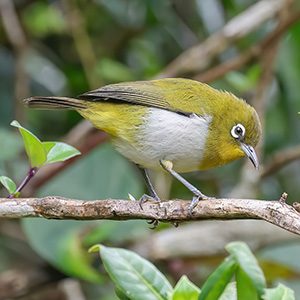
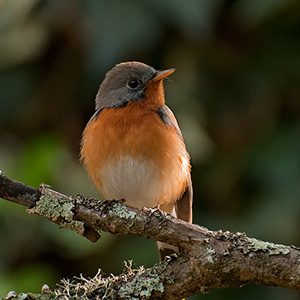

Birds to look for:
- Ceylon Warbler (Horornis chloronotus)
- Ceylon Whistling Thrush (Myophonus blighi)
- Ceylon Wood Pigeon (Columba torringtoni)
- Dusky Blue Flycatcher (Eumyias sordida)
- Scaly Thrush (Zoothera dauma)
- Spotted-winged Thrush (Zoothera spiloptera)
- Ceylon Rufous Babbler (Turdoides rufescens)
- Ceylon Blue Magpie (Urocissa ornata)
- Ceylon Hill White-eye (Zosterops ceylonensis)
- Pied Bush Chat (Saxicola caprata)
- Kashmir Red-breasted Flycatcher (Ficedula subrubra)
- Common Buzzard (Buteo buteo)
- Brown Baza (AvicedaA fasciata)
- Yellow-eared Bulbul (Pycnonotus penicillatus)
- Black-winged Kite (Elanus caeruleus)
- Black Eagle (Ictinaetus malaiensis)
- Mountain Hawk Eagle (Nisaetus nipalensis)
- Yellow-fronted Barbet (Psilopogon flavifrons)
- Alpine Swift (Apus melba)
- Crested Serpent Eagle (Spilornis cheela)
5. Yala National Park
Yala National Park, renowned for its majestic leopards and elephants, also stands out for its rich avian population that includes magnificent peacocks and elegant painted storks. This national park is widely acknowledged as one of the 70 most vital bird areas in Sri Lanka, providing a sanctuary for an impressive 215 bird species. Notably, six of these species – the Sri Lanka grey hornbill, Sri Lanka jungle fowl, Sri Lanka wood pigeon, crimson-fronted barbet, black-capped bulbul, and brown-capped babbler – are unique to this region. Moreover, Yala is a haven for various water birds, many of which are migratory and encompass several rare species within its diverse ecosystem.

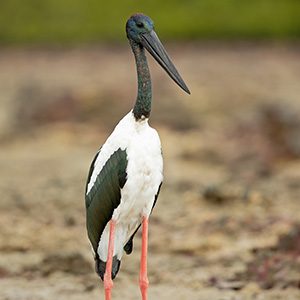
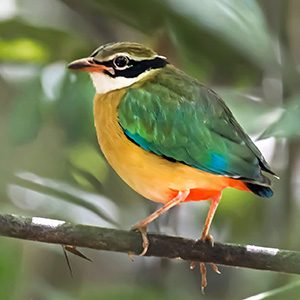
Birds to look for:
- Black-necked Stork (Ephippiorhynchus asiaticus)
- Lesser Adjutant Stork (Leptoptilos javanicus)
- White-necked Stork (Ciconia episcopus)
- Openbill Stork (Anastomus oscitans)
- Hoopoe (Upupa epops)
- Malabar Pied Hornbill (Anthracoceros coronatus)
- Ceylon Grey Hornbill (Ocyceros gingalensis)
- Orange-breasted Green Pigeon (Treron bicinctus)
- Rosy Starling (Pastor roseus)
- European Bee-eater (Merops apiaster)
- Orange-headed Ground Thrush (Geokichla citrina)
- Blue-faced Malkoha (Phaenicophaeus viridirostris)
- Red-backed Woodpecker (Dinopium psarodes)
- Black-backed Yellow Woodpecker (Dinopium benghalense)
- Yellow-fronted Pied Woodpecker (Dendrocopos mahrattensis)
- Brown-capped Pygmy Woodpecker (Yungipicus nanus)
- Indian Pitta (Pitta brachyura)
- Lesser Whistling Teal (Dendrocygna javanica)
- Sri Lanka Wood Pigeon (Columba torringtoni)
- Crimson-fronted Barbet (Psilopogon rubricapillus)
- Black-capped Bulbul (Pycnonotus melanicterus)
- Brown-capped Babbler (Pellorneum fuscocapillus)
6. Wilpattu National Park
Wilpattu National Park is the largest national park in Sri Lanka is home to over 200 bird species, including raptors like the White-bellied Sea Eagle. It also hosts an abundance of endemic birdlife such as the Jungle Fowl, Painted Stork, Owl, Terns, Gulls, Eagles, Heron, and winter migrants that stay for short periods within the nature reserve.
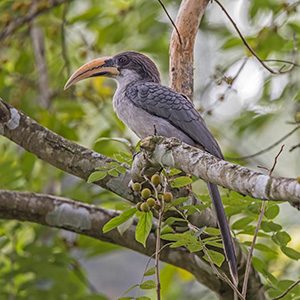
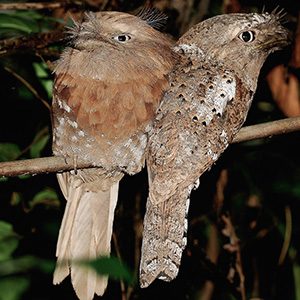
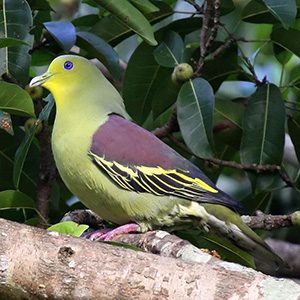
Birds to look for:
- Brown-capped Babbler (Pellorneum fuscocapillus)
- White-rumped Shama (Copsychus malabaricus)
- Ceylon Grey Hornbill (Ocyceros gingalensis)
- Pintail Snipe (Gallinago stenura)
- Ceylon Junglefowl (Gallus lafayettii)
- Black-tailed Godwit (Limosa limosa)
- Great Stone Plover (Esacus recurvirostris)
- Little Ringed Plover (Charadrius dubius)
- Ceylon Green Pigeon (Treron pompadora)
- Orange-breasted Green Pigeon (Treron bicinctus)
- Malabar Pied Hornbill (Anthracoceros coronatus)
- Racket-tailed Drongo (Dicrurus paradiseus)
- Forest Eagle Owl (Bubo nipalensis)
- Brown Fish Owl (Ketupa zeylonensis)
- Black-backed Yellow Woodpecker (Dinopium javanense)
- Rufous Woodpecker (Micropternus brachyurus)
- Golden-backed Woodpecker (Dinopium benghalense)
- Hoopoe (Upupa epops)
- Common Kestrel (Falco tinnunculus)
- Crested Hawk Eagle (Nisaetus cirrhatus)
- Crested Serpent Eagle (Spilornis cheela)
- White-bellied Sea Eagle (Haliaeetus leucogaster)
- Grey-headed Fish Eagle (Ichthyophaga ichthyaetus)
- Ceylon Frogmouth (Batrachostomus moniliger)
7. Kithulgala Forest Reserve
Kitulgala, a haven for nature lovers and bird enthusiasts, offers a unique opportunity to observe endemic species in their natural habitat. The picturesque riverine forests of Kitulgala provide a perfect setting for birdwatching, where one can spot elusive species like the Sri Lanka Spurfowl and Chestnut-backed Owlet. With its rich biodiversity and serene surroundings, Kitulgala is another birdwatching hotspot in Sri Lanka and a key destination for those seeking to immerse themselves in the beauty of Sri Lanka’s endemic bird species, including the vibrant Sri Lanka Orange-billed Babbler.
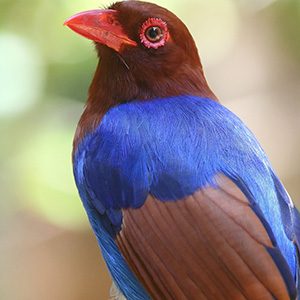
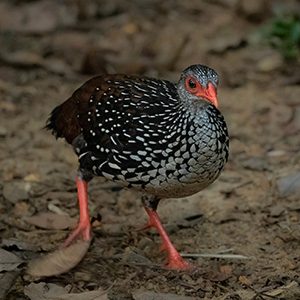
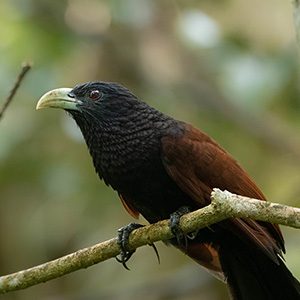
Birds to look for:
- Green-billed Coucal (Centropus chlororhynchos)
- Ceylon Lorikeet (Psittacula calthropae)
- Layard’s Parakeet (Psittacula calthropae)
- Ceylon Grey Hornbill (Ocyceros gingalensis)
- Chestnut-backed Owlet (Glaucidium castanopterum)
- Red-faced Malkoha (Phaenicophaeus pyrrhocephalus)
- Ceylon Blue Magpie (Urocissa ornata)
- Ceylon Junglefowl (Gallus lafayettii)
- Ceylon Spurfowl (Galloperdix bicalcarata)
- Ceylon Frogmouth (Batrachostomus moniliger)
- Ceylon Crested Drongo (Dicrurus paradiseus)
- Broad-billed Roller (Eurystomus orientalis)
- Spotted-winged Thrush (Zoothera spiloptera)
- Yellow-fronted Barbet (Psilopogon flavifrons)
- Black-naped Monarch (Hypothymis azurea)
- Common Hill Myna (Gracula religiosa)
- Crested Serpent Eagle (Spilornis cheela)
- Crested Hawk Eagle (Nisaetus cirrhatus)
- Black Eagle (Ictinaetus malaiensis)
- Mountain Hawk Eagle (Nisaetus nipalensis)
- Orange-billed Babbler(Turdoides rufescens)
8. Kumana National Park
The Kumana Bird Sanctuary, situated 391 km from Colombo on the southeastern coast, is a paradise for waterfowl enthusiasts. The water bodies and mangroves of Kumana provide a crucial habitat for birds, including rare species like the Black-necked Stork and Great Thick-knee, making it a haven for ornithologists. Established in 1938 as part of the Kumana National Park, this sanctuary serves as a vital nesting and breeding ground for birds in Sri Lanka. Among the 255 recorded bird species, the park is home to large flocks of migratory waterfowl and water birds, such as Eurasian Spoonbills, Lesser Adjutants, Black-necked Storks, and Great Thick-knees. Visitors can also observe various waders like the Pintail Snipe, Asian Open-bill, Glossy Ibis, and more. Rare sightings at Kumana include the Yellow-footed Green Pigeon, Greater Racket-tailed Drongo, Malabar Trogon, Red-faced Malkoha, and Sirkeer Malkoha.


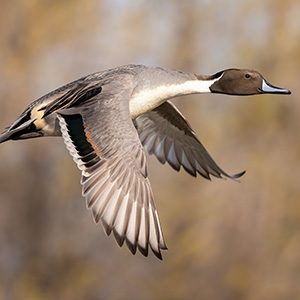
Birds to look for:
- Lesser Whistling Teal (Dendrocygna javanica)
- Spot-billed Pelican (Pelecanus philippensis)
- Openbill Stork (Anastomus oscitans)
- Purple Swamphen (Porphyrio porphyrio)
- Pheasant-tailed Jacana (Hydrophasianus chirurgus)
- Common Coot (Fulica atra)
- Grey Heron (Ardea cinerea)
- Purple Heron (Ardea purpurea)
- Black-winged Stilt (Himantopus himantopus)
- Yellow-wattled Lapwing (Vanellus malabaricus)
- Jungle Owlet (Glaucidium radiatum)
- Black-necked Stork (Ephippiorhynchus asiaticus)
- White-necked Stork (Ciconia episcopus)
- Painted Stork (Mycteria leucocephala)
- Northern Pintail (Anas acuta)
- Garganey (Spatula querquedula)
- Common Redshank (Tringa totanus)
- Greenshank (Tringa nebularia)
- Wood Sandpiper (Tringa glareola)
- Common Sandpiper (Actitis hypoleucos)
- Green Sandpiper (Tringa ochropus)
- Great Thick-knee (Esacus recurvirostris)
9. Minneriya National Park
The core of this park holds one of the country’s most diverse natural systems with intermediate forests, bamboo stands, patanas and talawas. The Minneriya Reservoir supports a wide variety of waterfowl. The vegetation consists of dry mixed evergreen forests, abandoned chena cultivation lands, grass lands and wet lands. Visit during the dry season to witness flocks of migratory birds gathering around the ancient Minneriya Reservoir. The Minneriya Reservoir is a sanctuary for various water birds, including the Lesser adjutant, Painted stork, and Spot-billed pelican, alongside a total of 160 resident and migratory bird species. Among the endemic birds are the Sri Lanka Jungle fowl, Sri Lanka hanging parrot, Brown capped babbler, Sri Lankan grey hornbill, Black-crested bulbul, and Crimson-fronted barbet.
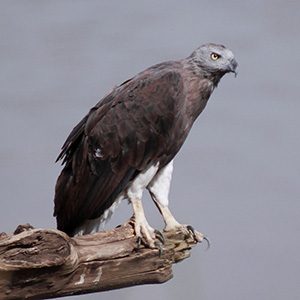

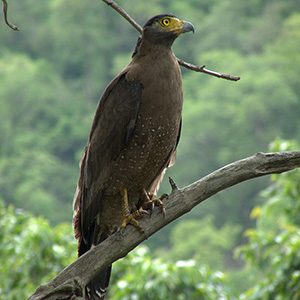
Birds to look for:
- Openbill Stork (Anastomus oscitans)
- Painted Stork (Mycteria leucocephala)
- White-necked Stork (Ciconia episcopus)
- Great Stone Plover (Esacus recurvirostris)
- Lesser Sand Plover (Charadrius mongolus)
- Crested Serpent Eagle (Spilornis cheela)
- Crested Hawk Eagle (Nisaetus cirrhatus)
- White-bellied Sea Eagle (Haliaeetus leucogaster)
- Grey-headed Fish Eagle (Ichthyophaga ichthyaetus)
- Golden Plover (Pluvialis apricaria)
- Eurasian Spoonbill (Platalea leucorodia)
- White Ibis (Eudocimus albus)
- Stork-billed Kingfisher (Pelargopsis capensis)
- White-rumped Shama (Copsychus malabaricus)
10. Anawilundawa Wetland Sanctuary
Anawilundawa, one of Sri Lanka’s Ramsar sites, is abundant with shorebirds such as plovers, sandpipers, and terns. What makes Anawilundawa truly unique is its immediate proximity to three distinct ecosystems: the coast, mangroves, and freshwater reservoirs, making it one of the six RAMSAR Wetlands in Sri Lanka. This exceptional ecological setting has established it as a favorable nesting and breeding ground for hundreds of bird species, including a large breeding colony of herons, the open-bill, great cormorant, white ibis, egret, stork, pheasant-tailed jacana, and the purple swamp hen, among 150 species of water birds.
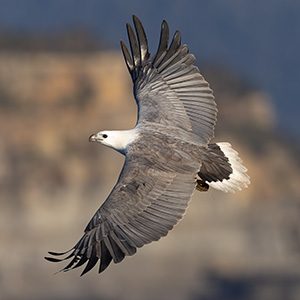
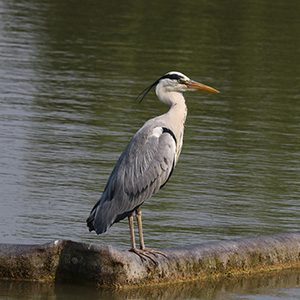

Birds to look for:
- Openbill Stork (Anastomus oscitans)
- Purple Swamphen (Porphyrio porphyrio)
- Common Moorhen (Gallinula chloropus)
- Lesser Whistling Teal (Dendrocygna javanica)
- Purple Heron (Ardea purpurea)
- Grey Heron (Ardea cinerea)
- Stork-billed Kingfisher (Pelargopsis capensis)
- Common Kingfisher (Alcedo atthis)
- Pied Kingfisher (Ceryle rudis)
- White-breasted Kingfisher (Halcyon smyrnensis)
- Garganey (Spatula querquedula)
- White-bellied Sea Eagle (Haliaeetus leucogaster)
- Grey-headed Fish Eagle (Ichthyophaga ichthyaetus)
- Black-winged Stilt (Himantopus himantopus)
- Cotton Pygmy-goose (Nettapus coromandelianus)
- Indian Cormorant (Phalacrocorax fuscicollis)
- Spoonbill (Platalea)
- Great Egret (Ardea alba)
- Intermediate Egret (Ardea intermedia)
- Little Egret (Egretta garzetta)
- Black-rumped Flameback (Dinopium benghalense)
- Brown Fish Owl (Ketupa zeylonensis)
11. Bellanwila-Attidiya Sanctuary
Situated in close proximity to the bustling city of Colombo, this urban wetland sanctuary serves as a haven for a diverse range of waterbirds, both resident and migratory, throughout the year. Boasting an impressive array of approximately 100 species that call this sanctuary home, visitors can spot Herons, Bulbuls, Swamp hens, Water hens, Kingfishers, Teals, Gulls, Swallows, Egrets and Storks amongst various other avian species.
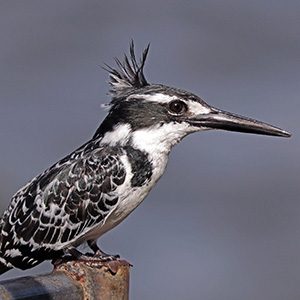
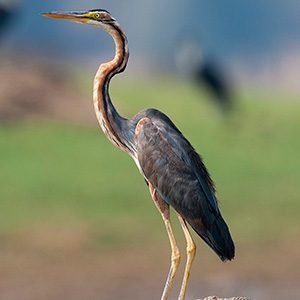
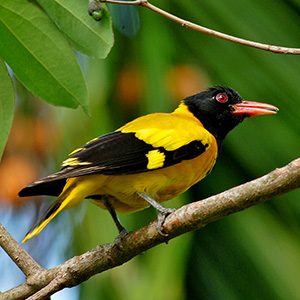
Birds to look for:
- Lesser Whistling Teal (Dendrocygna javanica)
- Asian Openbill (Anastomus oscitans)
- Purple Heron (Ardea purpurea)
- Blyth’s Reed Warbler (Acrocephalus dumetorum)
- Pallas’s Grasshopper Warbler (Locustella certhiola)
- Ashy Prinia (Prinia socialis)
- White-browed Prinia (Prinia inornata)
- White Ibis (Eudocimus albus)
- Black-headed Oriole (Oriolus xanthornus)
- Purple Swamphen (Porphyrio porphyrio)
- Watercock (Gallicrex cinerea)
- Common Kingfisher (Alcedo atthis)
- Pied Kingfisher (Ceryle rudis)
- White-breasted Kingfisher (Halcyon smyrnensis)
- Stork-billed Kingfisher (Pelargopsis capensis)
- Black-winged Stilt (Himantopus himantopus)
- Spot-billed Pelican (Pelecanus philippensis)
- White-breasted Waterhen (Amaurornis phoenicurus)
- Ruddy Crake (Zapornia fusca)
12. Kitulgala Belilena Cave Area
Nestled in the heart of Kitulgala, the Belilena Cave Area is a biodiverse region renowned for its abundance of forest-dwelling birds. Visitors can marvel at sightings of trogons, woodpeckers, and other fascinating avian species while exploring the ancient caves that dot this picturesque landscape.
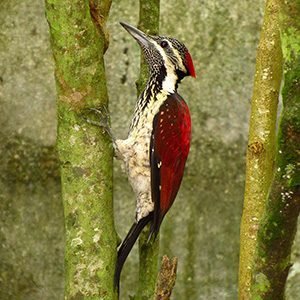
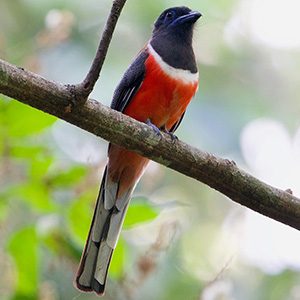
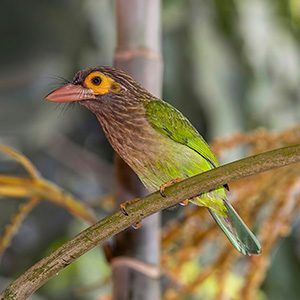
13. Kalametiya Bird Sanctuary
Discover a peaceful coastal sanctuary where you can observe waders like sandpipers feeding along mangrove-lined lagoons. This is a haven for many species of resident as well as migrant water birds including many species of migrant ducks. The Sanctuary includes the Lunama and Kalamatiya lagoons, Karukalli Saltern, and the surrounding marshy areas. As a top birdwatching hotspots in Sri Lanka, the Kalamatiya area hosts about 159 bird species, including 54 migratory ones. Within the Sanctuary, four nationally threatened birds are found – Indian Reef Heron, Glossy Ibis, Sri Lankan Jungle Fowl, and Black-capped Purple Kingfisher, with the Jungle Fowl being the only endemic species.

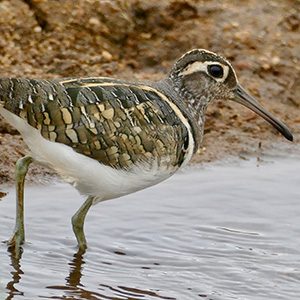
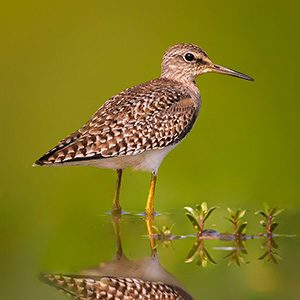
Birds to look for:
- Glossy Ibis (Plegadis falcinellus)
- White Ibis (Eudocimus albus)
- Painted Snipe (Rostratula benghalensis)
- Large Sand Plover (Charadrius leschenaultii)
- Ruddy Turnstone (Arenaria interpres)
- Clamorous Reed Warbler (Acrocephalus stentoreus)
- Watercock (Gallicrex cinerea)
- Ruddy Crake (Zapornia fusca)
- Pintail (Anas acuta)
- Garganey (Spatula querquedula)
- Black-winged Stilt (Himantopus himantopus)
- Little Pratincole (Glareola lactea)
- Alpine Swift (Apus melba)
- Common Redshank (Tringa totanus)
- Greenshank (Tringa nebularia)
- Wood Sandpiper (Tringa glareola)
- Common Sandpiper (Actitis hypoleucos)
- Green Sandpiper (Tringa ochropus)
14. Gal Oya National park
This National Park was established in February 1954 mainly to protect the catchment area of Senanayaka Samudra Reservoir. Approximately 45% of the park is covered with forests, 33% with savana, 9% grass lands and the balance in water bodies. A boat ride in Galoya National Park will allow visitors to observe flocks of birds nesting on “Bird’s Island”, home to close to 150 bird species, including migratory and endemic ones. Endemic species such as the Lesser adjutant, Spot-billed pelican, and Red-faced malkoha can be spotted. Water birds that frequent the reservoir include the Lesser whistling duck, Indian cormorant, Oriental darter, and Grey heron.


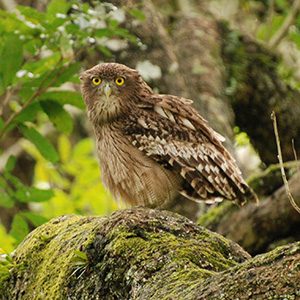
Birds to look for:
- Painted Partridge (Francolinus pictus)
- Jungle Bush Quail (Perdicula asiatica)
- Yellow-legged Green Pigeon (Treron phoenicopterus)
- Ceylon Frogmouth (Batrachostomus moniliger)
- Brown Fish Owl (Ketupa zeylonensis)
- Southern Sirkeer (Tadorna tadorna)
- Scaly-bellied Woodpecker (Picus squamatus)
- Brown-capped Pygmy Woodpecker (Yungipicus nanus)
- Ceylon Spurfowl (Galloperdix bicalcarata)
- Racket-tailed Drongo (Dicrurus paradiseus)
- Crested Serpent Eagle (Spilornis cheela)
- Crested Hawk Eagle (Nisaetus cirrhatus)
- White-bellied Sea Eagle (Haliaeetus leucogaster)
- Grey-headed Fish Eagle (Ichthyophaga ichthyaetus)
- Forest Eagle Owl (Bubo nipalensis)
- Fish Owl (Ketupa ketupu)
- Little Scops Owl (Otus sunia)
- Paradise Flycatcher (Terpsiphone paradisi)
- Thick-billed Flowerpecker (Dicaeum agile)
15. Muthurajawela Wetlands
Muthurajawela is a fascinating marshland known for its brackish water, lush mangroves, and diverse bird population. This unique ecosystem near Negombo provides the perfect nesting and thriving grounds for a variety of aquatic birds such as Cormorants, Ducks, Egrets, Herons, Storks, Eagles, Terns, Swallows, Swifts, Kingfishers and many more. Visitors can enjoy a peaceful boat trip for bird watching and immerse themselves in the beauty of nature while observing these resident birds in their natural habitat.

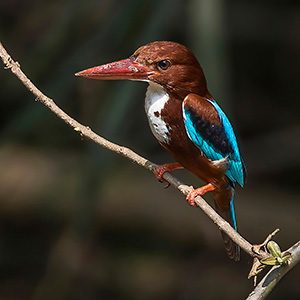
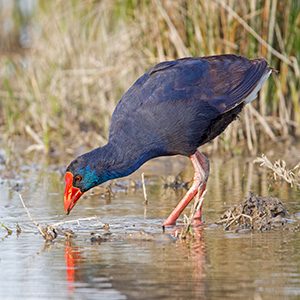
Birds to look for:
- Purple Heron (Ardea purpurea)
- Grey Heron (Ardea cinerea)
- Indian Pond Heron (Ardeola grayii)
- Little Egret (Egretta garzetta)
- Great Egret (Ardea alba)
- Black-crowned Night Heron (Nycticorax nycticorax)
- Yellow Bittern (Ixobrychus sinensis)
- Cinnamon Bittern (Ixobrychus cinnamomeus)
- Black-winged Stilt (Himantopus himantopus)
- White-breasted Waterhen (Amaurornis phoenicurus)
- Purple Swamphen (Porphyrio porphyrio)
- Common Moorhen (Gallinula chloropus)
- Pheasant-tailed Jacana (Hydrophasianus chirurgus)
- Common Kingfisher (Alcedo atthis)
- White-throated Kingfisher (Halcyon smyrnensis)
- Pied Kingfisher (Ceryle rudis)
- Black-capped Kingfisher (Halcyon pileata)
- Stork-billed Kingfisher (Pelargopsis capensis)
- Oriental Magpie Robin (Copsychus saularis)
- White-browed Fantail (Rhipidura aureola)
16. Knuckles Mountains
In the Knuckles Mountains, there are cloud forests and a diverse range of wildlife. This unique area provides a habitat for many forms of life that are endemic to this mountain range. The area is home to 128 bird species, including 17 endemic species such as the Black Eagle, Pale-billed Flowerpecker, Barbets, Lorikeets, Egrets, Herons, Bulbuls, Babblers, Kingfishers, and Woodpeckers.
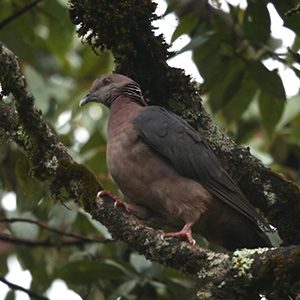
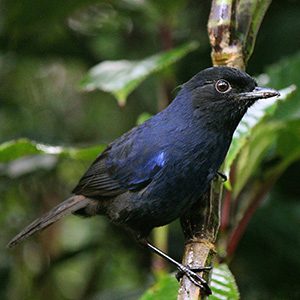
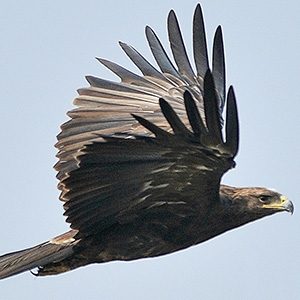
Birds to look for:
- Mountain Hawk-Eagle (Nisaetus nipalensis)
- Black Eagle (Ictinaetus malaiensis)
- Crested Hawk-Eagle (Nisaetus cirrhatus)
- Crested Serpent-Eagle (Spilornis cheela)
- Shaheen Falcon (Falco peregrinus peregrinator)
- Rufous-bellied Eagle (Lophotriorchis kienerii)
- Crested Honey Buzzard (Pernis ptilorhynchus)
- Ceylon Blue Magpie (Urocissa ornata)
- Ceylon Whistling Thrush (Myophonus blighi)
- Ceylon Scimitar Babbler (Pomatorhinus melanurus)
- Dusky Blue Flycatcher (Muscicapa sordida)
- Ceylon Wood Pigeon (Columba torringtoni)
- Ceylon Hill White-eye (Zosterops ceylonensis)
- Ceylon Grey Hornbill (Ocyceros gingalensis)
- Yellow-fronted Barbet (Psilopogon flavifrons)
- Spotted-winged Thrush (Zoothera spiloptera)
17. Lunugamvehera National Park
The reservoir and other water bodies in the park attract thousands of water birds, including nearly 200 species, both endemic and migratory, that have chosen it as a popular nesting and breeding ground. The vegetation comprises dry forests, open thorny scrub, and grasslands, making this location very favorable for birds.
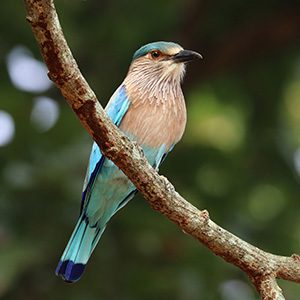
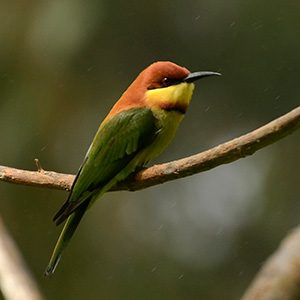
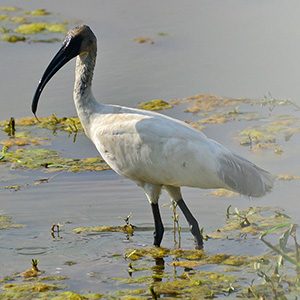
Birds to look for:
- Jungle Fowl (Gallus lafayettii)
- Sri Lanka Woodshrike (Tephrodornis affinis)
- Chestnut-headed Bee-eater (Merops leschenaulti)
- Blue-faced Malkoha (Phaenicophaeus viridirostris)
- Sri Lanka Brown-capped Babbler (Pellorneum fuscocapillus)
- Spot-billed Pelican (Pelecanus philippensis)
- Malabar Pied Hornbill (Anthracoceros coronatus)
- Grey Heron (Ardea cinerea)
- Black-headed Ibis (Threskiornis melanocephalus)
- Painted Stork (Mycteria leucocephala)
- White-necked Stork (Ciconia episcopus)
- Marshall’s Iora (Aegithina nigrolutea)
- Asian Openbill (Anastomus oscitans)
- Jungle Owlet (Glaucidium radiatum)
- Barred Buttonquail (Turnix suscitator)
- Indian Peafowl (Pavo cristatus)
- Crested Hawk Eagle (Nisaetus cirrhatus)
- Crested Serpent Eagle (Spilornis cheela)
- White-bellied Sea Eagle (Haliaeetus leucogaster)
- Indian Roller (Coracias benghalensis)
- Grey-headed Fish Eagle (Ichthyophaga ichthyaetus)
- Indian Pitta (Pitta brachyura)
- Crested Honey Buzzard (Pernis ptilorhynchus)
18. Kokkilai Bird Sanctuary
Located in the northeastern part of the island, Kokilai Bird Sanctuary has become a new birdwatching hotspot in Sri Lanka, a hidden gem near Trincomalee for nature enthusiasts. Kokkilai Lagoon is partly surrounded by mangrove swamps and sea grass beds, with the surrounding area comprising cultivated land, scrub, and open forests. Accessible by a scenic boat ride through the enchanting mangrove forest, this sanctuary is home to a variety of migratory, resident, and endemic bird species. The sanctuary boasts numerous bird varieties including cormorants, ducks, egrets, flamingoes, herons, ibis, pelicans, storks, Brahminy kites, and Asian openbills.
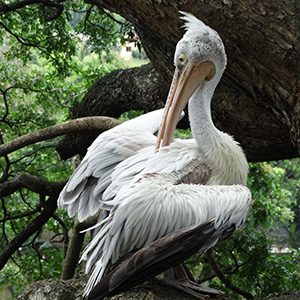


19. Mannar Island
Another noteworthy birdwatching hotspot in Sri Lanka is Mannar Island, known for its abundance of migratory birds. Explore the pristine salt marshes of Vankalai Nature Reserve along Sri Lanka’s northwestern coast, home to rare avifauna like black-winged stilts and spoonbills. The ancient giant tanks, built around 1500 years ago, provide ideal nesting grounds for both endemic and migratory bird species. This region offers a unique birdwatching experience distinct from the wet forests of the Central Highlands, the hill country, or the southern wetlands. With its low elevation, arid climate, and sparse population, Mannar Island boasts numerous mud flats and saline lakes that attract a variety of wintering birds. The Vankalai sanctuary is particularly renowned for spotting wading water birds.
Keep an eye out for Greater Flamingos, Black Tail Godwits, Garganeys, Pintail Ducks, Gulls, Plovers, and Terns congregating in large flocks. You may also catch sight of numerous raptors such as White-Bellied Sea Eagles, Brahmin Kites, Black Kites, and Common Kestrels, along with Crab Plovers and Pied Avocets.
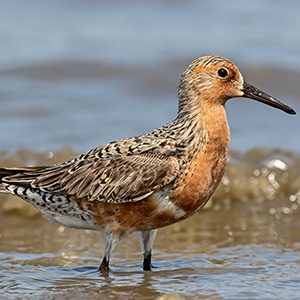
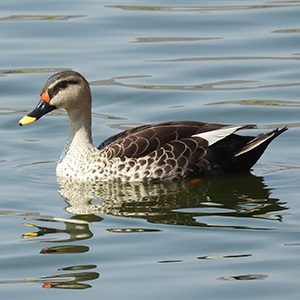
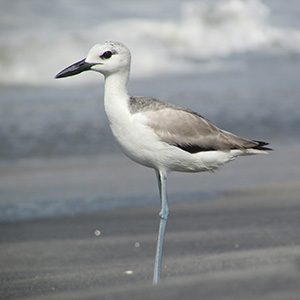
Birds to look for:
- Indian Spot-billed Duck (Anas poecilorhyncha)
- Eurasian Wigeon (Mareca penelope)
- Avocet (Recurvirostra avosetta)
- Common Teal (Anas crecca)
- Northern Shoveller (Spatula clypeata)
- Pintail (Anas acuta)
- Gargany (Spatula querquedula)
- Greater Flamingo (Phoenicopterus roseus)
- Crab Plover (Dromas ardeola)
- Oystercatcher (Haematopus ostralegus)
- Red Knot (Calidris canutus)
- Great Knot (Calidris tenuirostris)
- Ruff (Calidris pugnax)
- Indian Grey Partridge (Francolinus pondicerianus)
- Lesser Crested Tern (Thalasseus bengalensis)
- Great Crested Tern (Thalasseus bergii)
- Caspian Tern (Hydroprogne caspia)
- White-winged Black Tern (Chlidonias leucopterus)
- Little Tern (Sternula albifrons)
- Great Black-headed Gull (Larus ichthyaetus)
- Heuglin’s Gull (Larus heuglini)
- Brown Headed Gull (Chroicocephalus brunnicephalus)
- Common Coot (Fulica atra)
- Bar-tailed Godwit (Limosa lapponica)
- Kentish Plover (Charadrius alexandrinus)
- Black Drongo (Dicrurus macrocercus)
- Rufous Rumped Shrike (Lanius schach)
- Collared Dove (Streptopelia decaocto)
- Hoopoe (Upupa epops)
- Montague’s Harrier (Circus pygargus)
- Pallid Harrier (Circus macrourus)
- Peregrine Falcon (Falco peregrinus)
- Golden-backed Woodpecker (Dinopium benghalense)
20. Sigiriya Bird Sanctuary
The Sigiriya Bird Sanctuary covers an area of 5, 099 hectares of forest and water bodies around the Sigiriya rock. Some of the bird species found in this location include the Shahin Falcon, Little Scops Owl, Long-Tailed Night-Jar, Forest Eagle Owl, Openbill, Orange-Breasted Green Pigeon, Green Imperial Pigeon, and Emerald Dove.
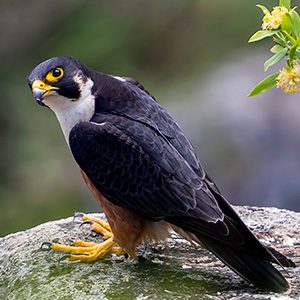
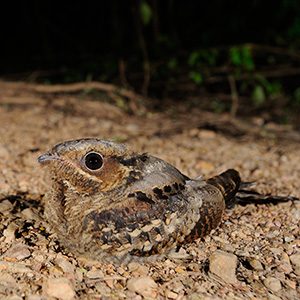

Birds to look for:
- Shahin Falcon (Falco peregrinus peregrinator)
- Little Scops Owl (Otus scops)
- Indian Nightjar (Caprimulgus asiaticus)
- Long-tailed Nightjar (Caprimulgus macrurus)
- Forest Eagle Owl (Bubo nipalensis)
- Openbill Stork (Anastomus oscitans)
- Ceylon Green Pigeon (Treron pompadora)
- Orange-breasted Green Pigeon (Treron bicinctus)
- Green Imperial Pigeon (Ducula aenea)
- Emerald Dove (Chalcophaps indica)
- Ceylon Junglefowl (Gallus lafayettii)
- Orange-headed Ground Thrush (Zoothera citrina)
- Indian Blue Chat (Eumyias albicaudatus)
- Brown-capped Babbler (Pellorneum fuscocapillus)
- White-rumped Shama (Copsychus malabaricus)
- Black-capped Bulbul (Pycnonotus melanicterus)
- Tickell’s Blue Flycatcher (Cyornis tickelliae)
- Brown Flycatcher (Muscicapa dauurica)
- Layard’s Flycatcher (Cyornis tickelliae layardi)
- Orange Minivet (Pericrocotus flammeus)
- Small Minivet (Pericrocotus cinnamomeus)
- Malabar Pied Hornbill (Anthracoceros coronatus)
- Ceylon Grey Hornbill (Ocyceros gingalensis)
- White-bellied Sea Eagle (Haliaeetus leucogaster)
- Crested Serpent Eagle (Spilornis cheela)
- Crested Hawk Eagle (Nisaetus cirrhatus)
- Blue-faced Malkoha (Phaenicophaeus viridirostris)
Birdwatching Tours: Guided Expeditions to Witness the Spectacular Avian Life of Sri Lanka
Embark on a memorable birdwatching adventure in Sri Lanka with guided tours that promise to unveil the breathtaking avian diversity of this tropical paradise. These excursions offer enthusiasts the opportunity to witness an array of bird species in their natural habitat, guided by experienced professionals who are well-versed in the local avifauna.
Professional bird guides in Sri Lanka bring a wealth of knowledge and expertise, ensuring that each tour is not only educational but also tailored to meet the specific interests of participants. Whether you are a seasoned birder or a novice enthusiast, these customised experiences cater to all levels of interest and expertise.
Immerse yourself in the sights and sounds of Sri Lanka’s rich birdlife as you traverse diverse landscapes, from lush forests to tranquil wetlands. You will have the chance to spot rare and endemic species while gaining insights into their behaviour and habitats.
Birdwatching trips in Sri Lanka offer more than just sightings; they provide an immersive experience that fosters a deeper appreciation for nature and conservation efforts. So, pack your binoculars and camera gear for an unforgettable journey into the world of avian wonders on the enchanting island of Sri Lanka.
Essential Gear and Tips for an Unforgettable Birdwatching Experience in Sri Lanka
When embarking on a birdwatching adventure in Sri Lanka, having the right gear can significantly enhance your experience. Here are some essential items to include in your birdwatching equipment checklist:
- Binoculars: Invest in a good pair of binoculars specifically designed for bird watching. Opt for models with a magnification of at least 8x and a wide field of view for better clarity.
- Field Guide: Carry a comprehensive field guide to identify the diverse bird species you may encounter in Sri Lanka. Look for guides that include detailed descriptions, illustrations, and habitat information.
- Camera: Capture the beauty of Sri Lanka’s avian inhabitants with a quality camera equipped with a telephoto lens. Photography adds an extra dimension to your birdwatching experience and allows you to document your sightings.
- Clothing and Footwear: Dress comfortably in lightweight, moisture-wicking clothing suitable for outdoor excursions. Wear sturdy footwear that provides good grip and support for walking through varied terrain.
When planning your birdwatching expedition in Sri Lanka, consider these photography tips to make the most of your experience:
– Lighting: Early morning or late afternoon offers the best lighting conditions for capturing vibrant bird images.
– Patience: Be prepared to wait quietly and observe birds in their natural habitat to capture authentic moments.
– Composition: Experiment with different angles and compositions to create visually appealing photographs.
– Respect Wildlife: Maintain a safe distance from birds to avoid causing disturbance or stress.
The best time for bird spotting in Sri Lanka is during the early hours of dawn or late afternoon when birds are most active. Visit renowned birdwatching hotspots such as Sinharaja Forest Reserve, Udawalawe National Park, and Bundala National Park for exceptional sightings.
Equipped with the right gear and armed with photography tips, you’re ready for an unforgettable birdwatching experience amidst the lush landscapes of Sri Lanka!
Sustainability and Conservation: Supporting Responsible Tourism Practices in Birdwatching Activities
When it comes to birdwatching activities, embracing sustainable tourism practices is crucial for the conservation of bird species and their habitats. In Sri Lanka, a country renowned for its rich avian diversity, efforts are being made to promote eco-friendly practices among wildlife enthusiasts.
Conservation efforts for birds in Sri Lanka are gaining momentum, with various organisations working towards protecting endangered species and preserving their natural ecosystems. By supporting responsible tourism practices in birdwatching activities, visitors can contribute to these conservation initiatives while enjoying the beauty of the island’s feathered residents.
Eco-friendly practices such as respecting wildlife habitats, minimizing disturbance to nesting sites, and following designated trails can help minimise the impact of tourism on bird populations. Additionally, choosing eco-conscious tour operators that prioritise sustainability can further support conservation efforts in the region.
By promoting sustainable tourism practices in birdwatching activities, we can ensure that future generations have the opportunity to appreciate and engage with Sri Lanka’s diverse birdlife while safeguarding its natural heritage for years to come.
Useful links
Ceylon Bird Club – For in-depth resources on bird species and bird-watching news in Sri Lanka, this site is a resource run by local experts and conservationists
Field Ornithology Group of Sri Lanka – A facebook page for bird lovers
iGoTerra – iGoTerra is a comprehensive platform for wildlife enthusiasts, providing tools to record and manage wildlife observations, track birdwatching trips, and share sightings with a global community.
Sri lanka wildlife conservation society: The Sri Lanka Wildlife Conservation Society focuses on protecting Sri Lanka’s endangered wildlife and habitats through community-driven conservation and research.

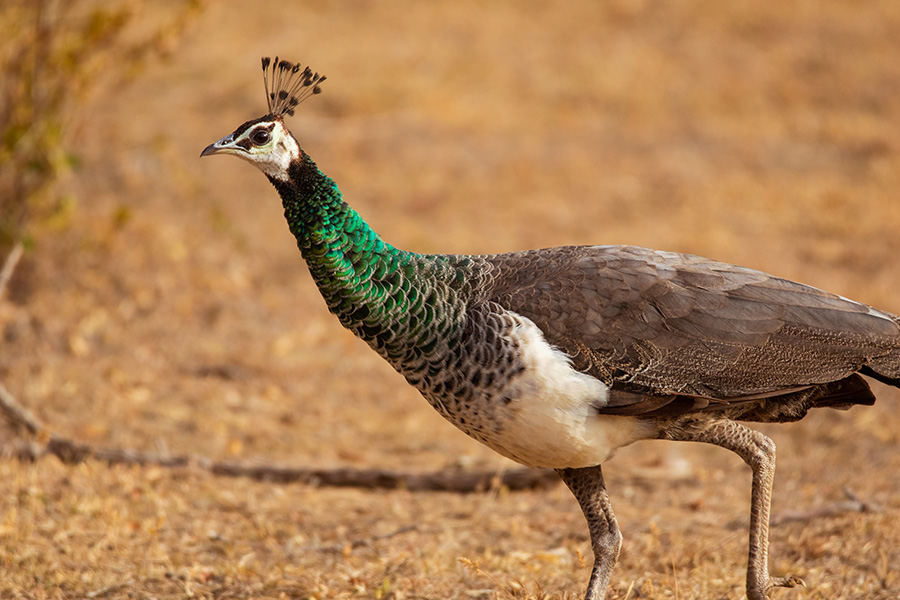
0 Comment